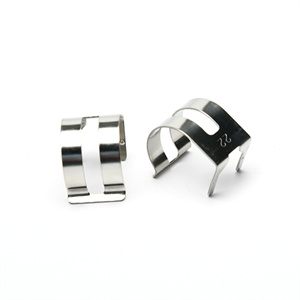The application of Flat Springs in communication equipment mainly includes auxiliary, connection, fixing and protection. Although they are not the core communication elements of the communication equipment, they play an important role in ensuring stable operation and extending the service life of the equipment.
1、 Fixing and connection
Fixation of components:
Flat Springs can be used to secure critical components such as circuit boards, modules, connectors, etc. in communication equipment to ensure that they are securely mounted inside the equipment to prevent loosening or damage due to vibration or movement.
By virtue of its elastic properties, Flat Springs can provide a uniform tightening force while allowing a certain degree of deformation to suit the installation requirements of different components.
Cable management:
Inside the communication equipment, Flat Springs can be used to organize and fix the cable, prevent the cable from winding, loosening or damaging, and ensure the reliability and stability of signal transmission.
Flat Springs also helps reduce electromagnetic interference (EMI) and radio frequency interference (RFI) and improve communication quality by securing the cable in place.
2、 Protection and support
Seismic Protection:
For communication equipment that needs to withstand vibration or shock (such as vehicle-mounted communication equipment, UAV communication equipment, etc.), the elastic characteristics of Flat Springs can provide additional seismic protection and reduce the impact of external shock on the internal components of the equipment.
This helps to ensure stable operation in harsh environments and extend the life of the equipment.
Heat dissipation assistance:
In communication equipment requiring heat dissipation, Flat Springs can be used to fix cooling elements such as fins or heat pipes to ensure they are in close contact with the heating elements and improve heat dissipation efficiency.
By optimizing the fixing of the cooling elements, Flat Springs helps to reduce the operating temperature of the equipment and prevent performance degradation or damage due to overheating.
3、 Customized application
Special needs:
Depending on the specific needs of the communication equipment, Flat Springs can be customized to meet specific fixation, connection or protection requirements.
For example, you can design Flat Springs with special shapes, sizes, and materials to accommodate the installation space and operating environment of different equipment.
4、 Others
Material selection: Common materials of Flat Springs include carbon steel, stainless steel, brass, copper, phosphor bronze and beryllium copper. These materials have good elasticity, corrosion resistance and processability and are suitable for various application scenarios of communication equipment.
Design Flexibility: Flat Springs can be made in various shapes, sizes and designs to accommodate different installation locations and space constraints. For example, they can be designed as flat, bent, or spring leaves with special shapes to meet specific fixing and connection requirements.
Performance advantages: Flat Springs offer light weight, small size, ease of installation and cost effectiveness over other fixed and connecting elements. They can provide reliable fixation and connection in limited space, and reduce the overall weight and cost of equipment.
